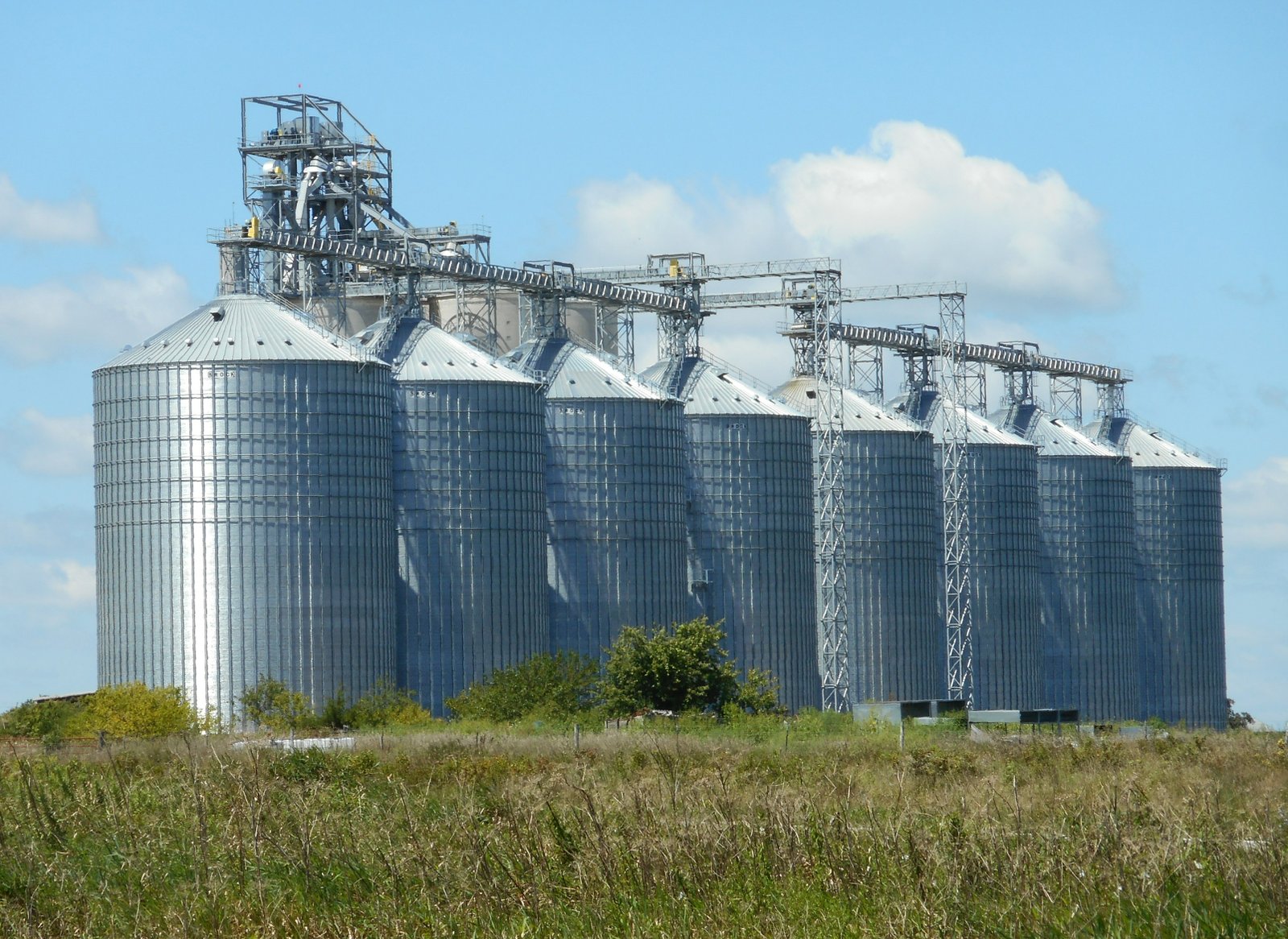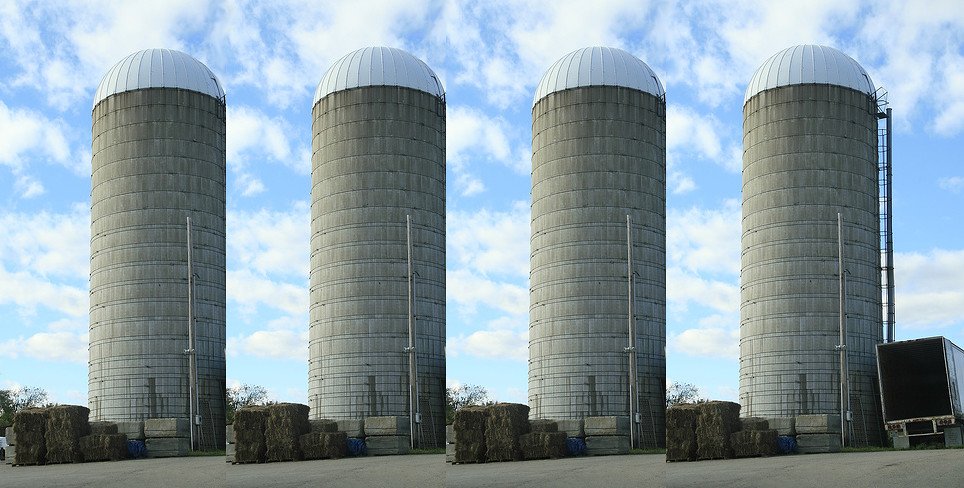Unlocking SEO’s full potential lies within the concept of content silos, the secret ingredient to structuring success in the digital realm. In this article, we peel back the layers of this powerful strategy, diving into the depths of its effectiveness and the unseen possibilities it holds. Aptly named “,” this is your ultimate guide to harnessing the true power of search engine optimization. So, buckle up and embark on a journey that will transform the way you approach digital marketing, forever.
Table of Contents
- Unleashing the Power of Content Silos: A Comprehensive Guide
- Revolutionizing SEO: The Role of Content Silos in Improving Website Performance
- Maximizing Organic Traffic: How to Effectively Implement Content Silos for SEO Success
- Content Silos Best Practices: Key Strategies for Captivating Users and Enhancing SEO Performance
- Q&A
- In Conclusion
![]()
In the world of search engine optimization (SEO), content silos hold immense power. They are the secret weapon that can catapult your website to the top of search engine rankings, driving more organic traffic and increasing your online visibility. So, what exactly are content silos and how can they unlock the potential of your SEO strategy? Let’s delve deeper and unravel the mysteries behind this powerful technique.
Content silos are like a well-organized library, where each book or piece of content has a specific place and purpose. Instead of scattering your website’s content all over the place without any rhyme or reason, content silos enable you to categorize and structure your content in a way that search engines can better understand and index. Think of it as building a strong foundation for your website’s SEO success. By grouping related content together and interlinking them, you create a hierarchy of information that helps search engines understand the relevance and breadth of your content. This, in turn, improves your chances of ranking higher in search results and driving targeted traffic to your site.
To better visualize the power of content silos, imagine your website as a city, and each silo as a neighborhood within that city. Each neighborhood specializes in a particular topic, and within each neighborhood, you have interconnected streets that lead to related information. Now, picture search engines as curious explorers navigating through this city. When search engines encounter well-structured content silos, they are able to efficiently explore and comprehend the depth of knowledge your website offers, leading to higher rankings and increased visibility. So, whether you’re a beginner in the world of SEO or an experienced marketer, implementing content silos in your website structure opens up a new dimension of optimization possibilities.
Unleashing the Power of Content Silos: A Comprehensive Guide
Content silos are a vital tool in the world of SEO, allowing websites to organize and structure their content in a way that maximizes search engine visibility and user experience. By creating a hierarchical system, content silos ensure that every piece of information has its own dedicated space, making it easier for search engines to index and understand the site. Think of content silos as individual compartments within a website, each with its own unique topic or theme. This enables search engines to identify and categorize the content more accurately, resulting in higher rankings and increased organic traffic.
One key advantage of content silos is their ability to establish a clear and logical website structure. With a well-designed hierarchy, visitors can navigate through the site effortlessly, finding exactly what they’re looking for. This, in turn, improves user experience and keeps visitors engaged for longer periods. Not only does this benefit the user, but it also sends positive signals to search engines, indicating that your website is providing valuable and relevant content. Content silos also allow for easier internal linking, connecting related pieces of content together within the same silo. This internal linking strengthens the overall authority and relevance of the silo, making it more likely to rank higher in search engine results pages. By following the principles of content silos, beginner webmasters can unleash the power of SEO and take their websites to new heights.

Revolutionizing SEO: The Role of Content Silos in Improving Website Performance
When it comes to revolutionizing SEO and improving website performance, one strategy that holds immense potential is the implementation of content silos. These powerful structures can take your website’s organization to the next level, making it easier for search engines to understand and index your content, while also helping users navigate through your site effortlessly.
Content silos act as virtual filing cabinets, where related content is grouped together in a logical and hierarchical manner. By organizing your website’s content into topic-specific silos, you create a clear path for search engines to follow, ensuring that they can easily identify and understand the key themes and topics covered on your site. This improved understanding allows search engines to present your content to the right audience, ultimately driving targeted organic traffic.
- Enhanced relevance and authority: Content silos hone in on specific topics, allowing you to become an authoritative voice in your field. By grouping related content together, you not only establish coherence and logical flow but also reinforce the relevance of your website to search engines.
- Improved user experience: Content silos make it easier for your visitors to find exactly what they’re looking for. With clear navigation and well-structured silos, users can effortlessly navigate through your site, finding related content with ease.
- Optimized indexing: Search engines thrive on well-organized data, and content silos provide just that. By structuring your website using silos, you ensure that search engine bots can efficiently crawl and index your content, leading to improved visibility in search results.
- Reduced keyword cannibalization: Silos help mitigate the issue of keyword cannibalization, where multiple pages of your website compete against each other for the same keywords. By grouping related content together, you consolidate keyword focus, ensuring that each page targets distinct keywords, maximizing opportunities for search engine rankings.

Maximizing Organic Traffic: How to Effectively Implement Content Silos for SEO Success
In today’s competitive digital landscape, understanding the power of content silos is vital for any website owner looking to boost their organic traffic. Content silos, also known as topic clusters, provide an organized structure that enhances your site’s visibility in search engine results. By grouping related content together, you create a clear and logical architecture that search engines adore.
So, how can you effectively implement content silos to unlock SEO success? Let’s dive into some practical tips:
- Identify core topics: To begin, brainstorm and determine the core topics that are relevant to your website. These should encapsulate broad subject areas that you want to be seen as an authority in.
- Create pillar content: Once you have your core topics, it’s time to develop your pillar content. Pillar content represents the main page for each core topic, providing comprehensive and valuable information on the subject. These pages will serve as the foundation of your content silos.
- Build topic clusters: With your pillar content established, it’s time to create topic clusters. These are subtopics related to your core topics that dive deeper into specific aspects. Group your relevant articles, blog posts, or videos under each subtopic, linking them back to the corresponding pillar page. This internal linking strategy helps search engines connect the dots.
- Optimize for keywords: Keyword research is crucial when implementing content silos. Look for long-tail keywords that align with your core topics and subtopics. Incorporate these keywords naturally into your content to improve visibility in search results.
By structuring your website with content silos, you provide a seamless user experience and make it easier for search engines to crawl and understand your content. Embrace the power of content silos and watch as your organic traffic climbs to new heights!

Content Silos Best Practices: Key Strategies for Captivating Users and Enhancing SEO Performance
In the world of SEO, content silos are like the hidden gem waiting to be discovered. These powerful structures not only captivate users but also enhance your website’s SEO performance. By organizing and categorizing your content into distinct silos, you create a user-friendly experience that leads to higher engagement and increased conversions. Additionally, search engines love well-structured websites, and content silos provide the perfect framework for them to understand and index your content more effectively.
So, how exactly do you unlock the true potential of content silos? Let’s explore some key strategies that will help you structure your way to success:
1. Categorize your content: Imagine your website as a library, with each content silo acting as a different section. By grouping related content together, you make it easier for users to find what they’re looking for and navigate through your site effortlessly. This not only improves the user experience but also helps search engines comprehend the theme and relevance of your content.
2. Create internal links: Internal linking is like the glue that holds your content silos together. By incorporating hyperlinks within your articles or blog posts, you connect different pieces of related information. This not only helps users discover more of your content but also signals to search engines the relationships between different pages of your website. And don’t forget to use descriptive anchor text for your internal links to provide additional context.
3. Optimize your meta tags: Meta tags, such as meta titles and descriptions, play a crucial role in SEO. To boost your search engine visibility and entice users to click on your pages, ensure that your meta tags accurately reflect the content within each silo. Craft compelling and keyword-rich meta titles and descriptions that will make your website stand out in search engine results.
4. Aim for relevancy: When creating content within your silos, always strive for relevancy. Each silo should have a clear theme or topic, and the content within it should align with that theme. This not only helps users find valuable information, but it also signals to search engines that your website is an authoritative source on a specific subject.
By implementing these best practices, you can unleash the power of content silos to create a well-structured website that appeases both users and search engines. So, start organizing your content today and witness the transformative effect it has on your SEO performance. Ready to take your website to the next level? Dive into the realm of content silos and revel in the benefits they bring!
Q&A
Q: What is the concept of “Content Silos” in SEO?
A: Content Silos in SEO refer to a strategic approach that organizes website content into specific categories or themes, helping both search engines and users easily navigate and understand the site’s structure.
Q: How does Content Silos contribute to the success of a website?
A: By structuring content into silos, websites can create a more organized and logical framework for search engines to recognize and categorize the content. This, in turn, enhances the website’s visibility in search engine rankings and improves user experience.
Q: What are the key benefits of implementing Content Silos in SEO?
A: Content Silos offer several advantages, including improved website navigation, increased organic search visibility, higher click-through rates, better user engagement, enhanced keyword targeting, as well as easier content management and updates.
Q: How does Content Silos help with website navigation?
A: By categorizing content into silos, website visitors can easily find and access relevant information within a specific theme. This streamlined navigation structure enables users to locate desired information quickly and efficiently, minimizing bounce rates and enhancing overall user experience.
Q: Can you provide an example of how Content Silos work in practice?
A: Sure! Let’s say you have a website selling various types of outdoor sports equipment. You could create content silos for specific sports such as hiking, camping, and skiing. Each silo would house related content, such as product descriptions, how-to guides, and user reviews specific to each sport. This allows search engines and users to easily understand and navigate the website’s content structure.
Q: How does implementing Content Silos improve search engine visibility?
A: Content Silos provide search engines with a clear and logical structure of your website’s content, making it easier for them to crawl and index the pages. This enhances search engine visibility, as engines can more accurately identify the relevance and authority of the content, leading to better rankings on relevant search queries.
Q: Are there any recommended practices for creating effective Content Silos?
A: Absolutely! It’s important to start by conducting thorough keyword research and understanding your target audience’s search intent. Then, create silos based on related topics or themes, ensuring each silo has a well-defined main topic. Additionally, interlinking relevant content within the same silo is crucial to strengthen the overall visibility and authority within that specific topic.
Q: How does Content Silos contribute to better user engagement?
A: When content is organized into silos, users can easily navigate from one related topic to another. This helps them discover additional useful information without having to search for it separately, resulting in increased time spent on the website and a higher likelihood of engagement, including exploring more content or making a purchase.
Q: Can Content Silos be implemented on existing websites or only on new ones?
A: Content Silos can be implemented on both new and existing websites. While it may require some restructuring and redirection of URLs for existing sites, the benefits of implementing Content Silos are still attainable.
Q: Is there any potential downside or risk associated with implementing Content Silos?
A: While implementing Content Silos can significantly enhance your website’s structure and SEO performance, it’s essential to plan the silos carefully to avoid keyword cannibalization, where multiple pages within the same silo compete for the same keywords. Additionally, improper implementation or excessive siloing can lead to a complicated navigation system, negatively impacting user experience. Therefore, proper planning and execution are key to mitigate any potential downsides.
Q: How can website owners get started with implementing Content Silos?
A: To get started, website owners should conduct thorough research and planning, analyzing their target keywords and mapping them to relevant silos. Then, creating a clear and intuitive navigation structure that helps users and search engines alike. It may also be beneficial to seek professional assistance from SEO experts who specialize in Content Silos to ensure optimal implementation and maximize the potential for success.
Key Takeaways
As we draw a close to our exploration of the untapped power of SEO through content silos, we can’t help but feel an air of excitement and anticipation. The possibilities that lay within these carefully crafted structures are nothing short of remarkable.
Throughout this journey, we’ve delved deep into the intricate world of search engine optimization, uncovering the secrets that lie beneath the surface. We’ve learned that by organizing and categorizing our content into distinct silos, we can create a seamless user experience while simultaneously skyrocketing our website’s visibility in the digital landscape.
But it doesn’t end there. The potential for success stretches far beyond the confines of a single article. Content silos offer a revolutionary approach to harnessing the power of SEO, enabling businesses and individuals to rise above the noise, capturing the attention of their target audiences with laser precision.
Within each silo resides a treasure trove of information, neatly organized and ready to be discovered. By strategically linking related content within these silos, we create a powerful web of interconnectivity that not only pleases search engines but also captivates and engages the ever-elusive human reader.
It’s time to embrace the limitless potential that lies within content silos. It’s time to break free from the traditional boundaries of SEO strategies and unlock a new era of online success.
So, as we bid farewell to this in-depth exploration, let us carry forward the knowledge and insights gained, knowing that we now possess the tools to reshape our digital presence and usher in a new era of triumph.
The path to success may be winding, but with content silos as our guiding light, the journey itself becomes an exhilarating adventure filled with endless possibilities. So, gear up, fellow digital trailblazers, for with content silos, we are poised to conquer the ever-changing landscape of SEO and emerge victorious.

